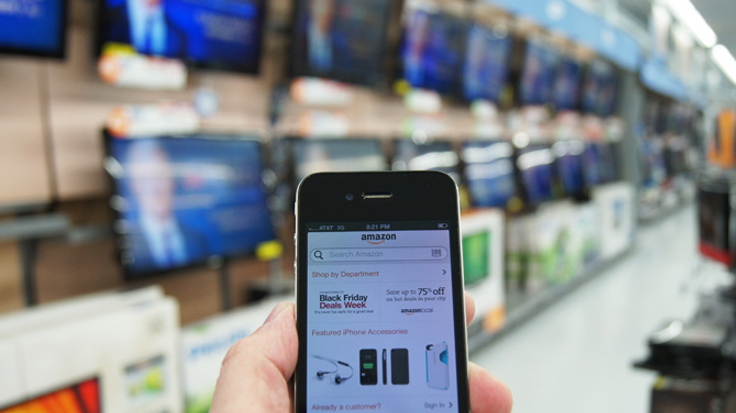By Doug Stephens

Remember those ads a few years ago describing the little-known affliction called restless leg syndrome? Few of us had ever heard of the disorder but to listen to the ads, one was prone to believe it was an epidemic. Who, after all, doesn’t experience the odd bad night’s sleep or a little restlessness. And, given that just before we wake up, we’re… well… asleep, it wasn’t hard for pharmaceutical marketers and the media to convince us that while in that sleep we were literally doing the Harlem Shake! Yup! Restless leg syndrome was apparently keeping us all up at night!
But in fact, according to Johns Hopkins Medical Center, only approximately 5 percent of the general population may genuinely suffer from restless leg syndrome to the extent that it affects sleep. Hardly an epidemic when compared to dozens of other more widespread and serious conditions.
“Showrooming” has become a little like restless leg syndrome.
It too is a condition that’s difficult to prove and yet very easy to believe you’re afflicted with – especially when marketers and the media keep telling you you are. Not only have retailers like Best Buy and Walmart come to blame much of their woes on showrooming, there are also loads of technology, marketing and media companies out there right now thriving on perpetuating the belief that showrooming is the very source of those sales woes! Showrooming has become a catalyst for a whole new range of omni-channel support, systems and services. Showrooming is big business.
The facts about showrooming however, tell a different story.
A recent and relatively robust survey from Bizrate of 9,000 shoppers who had just consummated an online purchase, concluded that even among the relatively small percentage of shoppers who actually showroom (almost 80% do not), the majority end up buying from that same retailer’s online store – not from a competitor, as we are often led to believe.
Now, does this mean that consumers aren’t making better use of the data at their disposal via mobile devices? Certainly not. Plenty of studies have confirmed the growing influence of mobile on pre-purchase and in-purchase behavior. And that’s only likely to continue. What it does suggest however, is that just like restless leg syndrome isn’t the likely cause of most lost sleep, showrooming isn’t the cause of most lost sales – not yet anyway.
So what’s the real problem?
From my point of view, it’s that we live in a world of one-click convenience and no one really needs what you sell anymore. They do however, need why and how you sell it. But if your store isn’t substantially differentiated or remarkable enough to hold a distinct and powerful position in the consumer’s mind and win their love and loyalty, you’re going to lose sales to online players every day. Not because consumers are sneaky. Not because showrooming is rampant. And not because technology is evil. But because your business and the shopper experience you’ve offered simply aren’t compelling enough to command the sale. 
So don’t be taken in to believing that you’re being afflicted by some new, obscure condition. And don’t look for a pill to miraculously cure you. There isn’t one I’m afraid. Instead, go back to the drawing board and ask “What does my business offer the world that it can’t get elsewhere?” If you can’t come up with an exceptionally good answer, showrooming isn’t your real problem at all.

